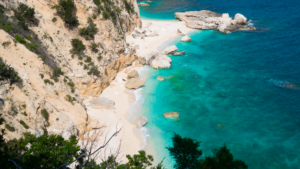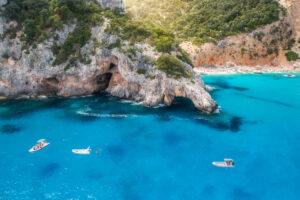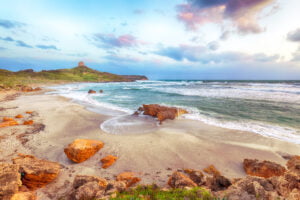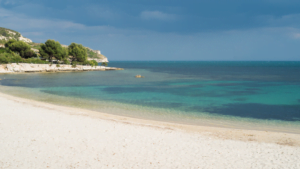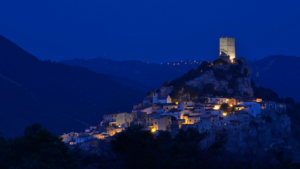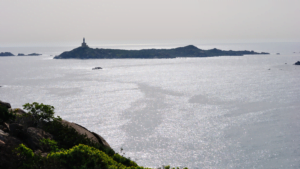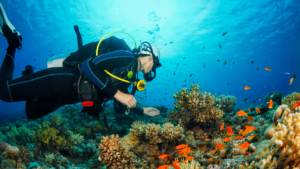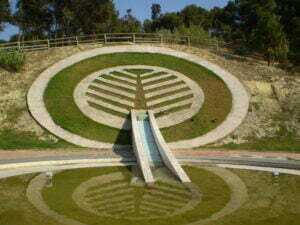The Sardinian Flag, known as “Quattro Mori” (Four Moors) is a reflection not just of past victories or ancient governance structures, but of a collective identity that has been shaped and reshaped through centuries of interaction, conflict, and unity.
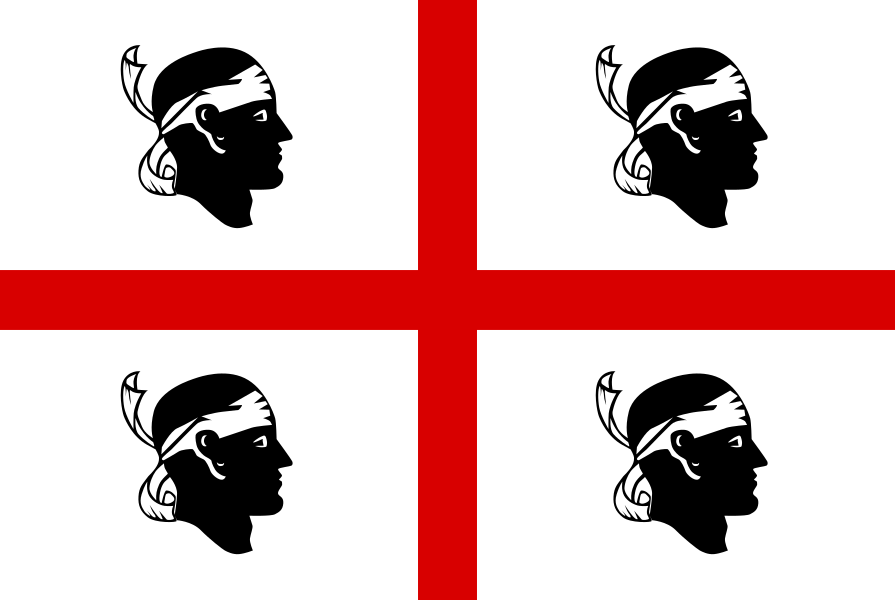
Historical Origins
The Sardinian flag’s history is intertwined with the island’s complex past, marked by periods of conquest and governance that shaped its identity. The connection to the Kingdom of Aragon is particularly significant, with the flag initially symbolizing triumphs over Moorish forces. These victories are commemorated through the imagery of the Moors’ heads on the flag, a nod to the island’s role in the broader conflicts of the Mediterranean.
Equally foundational is the giudicati era, a unique period in Sardinia’s history when the island was divided into four autonomous regions: Cagliari, Arborea, Torres, and Gallura. This division is mirrored in the flag’s design, with each Moor’s head thought to represent one of these kingdoms. This era underscores the island’s long-standing tradition of regional autonomy and resilience, aspects that are deeply embedded in the flag’s symbolism.
Through these historical lenses, the flag emerges not just as a symbol of Sardinia’s victories or its struggles but as a complex emblem of its rich, multifaceted heritage. It reflects a narrative of unity and identity, forged over centuries of history.
Evolution and symbolism of the Flag
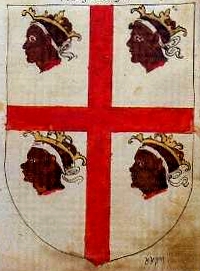

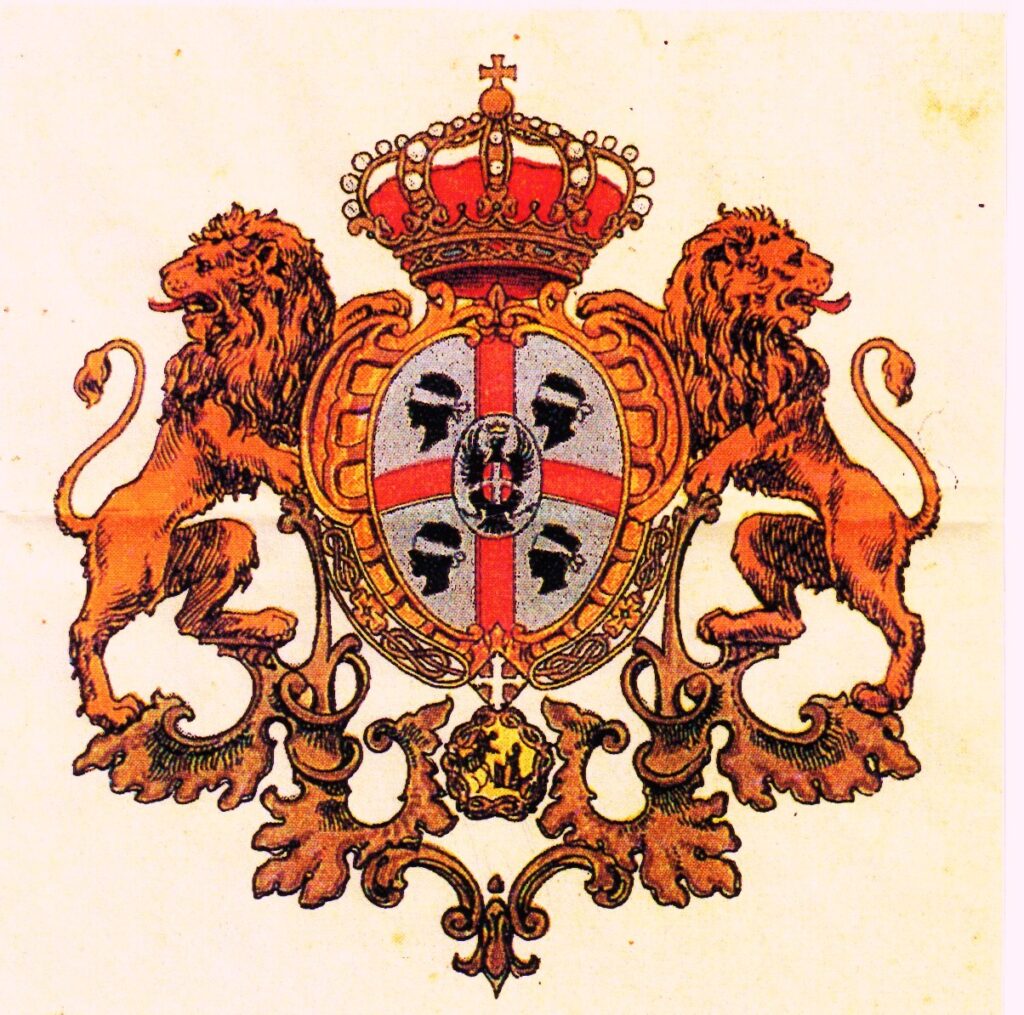

The imagery and symbolism of the Sardinian flag are rich with historical references and cultural meanings that have evolved over time. At its core, the flag features the Moors’ heads, a motif that has sparked various interpretations and narratives:
- Victory Over Invaders: The depiction of the Moors’ heads is commonly interpreted as a symbol of Sardinia’s historical victories over Moorish invaders. This interpretation reflects the broader context of Mediterranean conflicts and the island’s role in defending its territory and culture from external threats.
- Island’s Resilience: Beyond specific historical events or administrative divisions, the Moors’ heads symbolize the broader theme of resilience and endurance. The people of Sardinia have faced numerous challenges over the centuries, from invasions to internal strife, and the flag stands as a testament to their ability to persevere and maintain their distinctive identity.
- Representation of the Four Giudicati: The flag’s four quarters, each adorned with a Moor’s head, are also seen as representing the medieval division of Sardinia into four separate kingdoms, known as giudicati: Cagliari, Arborea, Torres, and Gallura. This aspect of the flag’s symbolism speaks to a period when the island was characterized by a unique form of governance and regional autonomy.
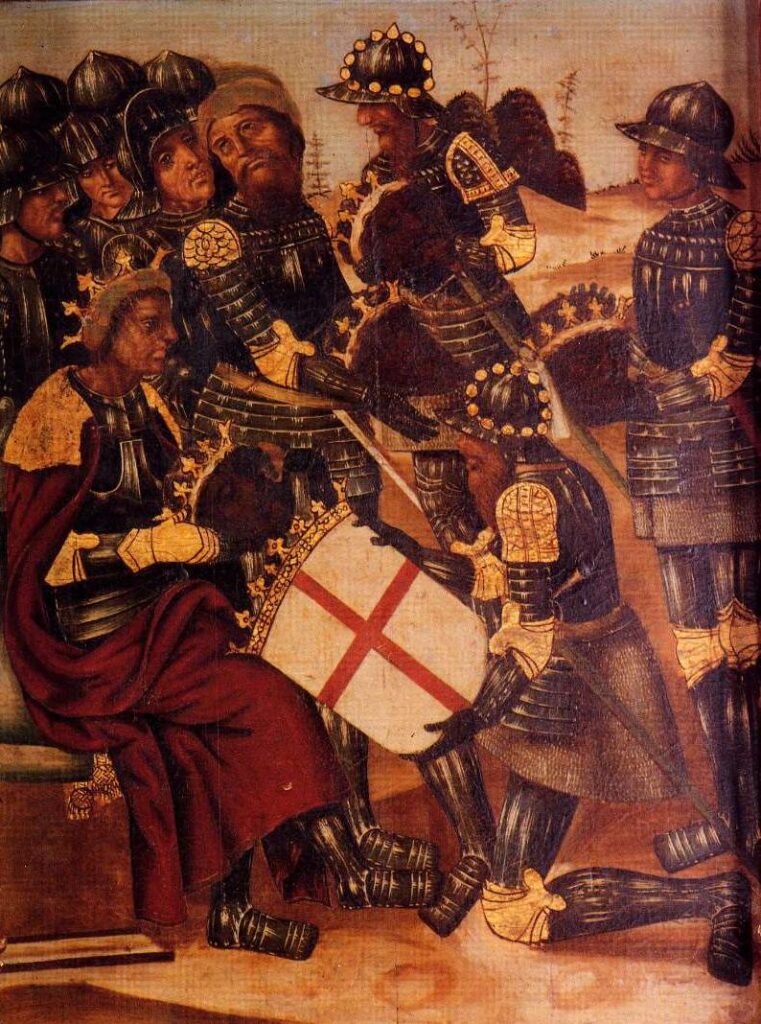

The flag also features the red cross of St. George, a symbol with its own significant meanings:
- Protection: The cross is widely recognized as a symbol of protection and has been associated with various military orders and Christian patron saints, including St. George, who is often depicted slaying a dragon. In the context of the Sardinian flag, the red cross signifies the protective mantle under which the island and its people have historically rallied, especially during times of conflict.
- Christian Heritage: The inclusion of St. George’s cross highlights the island’s Christian heritage, which has been a central aspect of its cultural and religious identity. This element of the flag’s design connects Sardinia to the wider Christian world, emphasizing shared beliefs and values.
Overall, the symbolism and interpretations of the Sardinian flag weave together themes of battle and bravery, governance and autonomy, resilience and protection, all of which contribute to Sardinian identity.
The Flag in Modern Times
In contemporary times, the Sardinian flag transcends its historical roots to become a symbol of pride and identity for the island’s inhabitants. Its presence is felt everywhere, from the fluttering banners in public squares and government buildings to the more personal spaces of homes and vehicles, where stickers and miniatures proudly display the flag’s distinctive design.
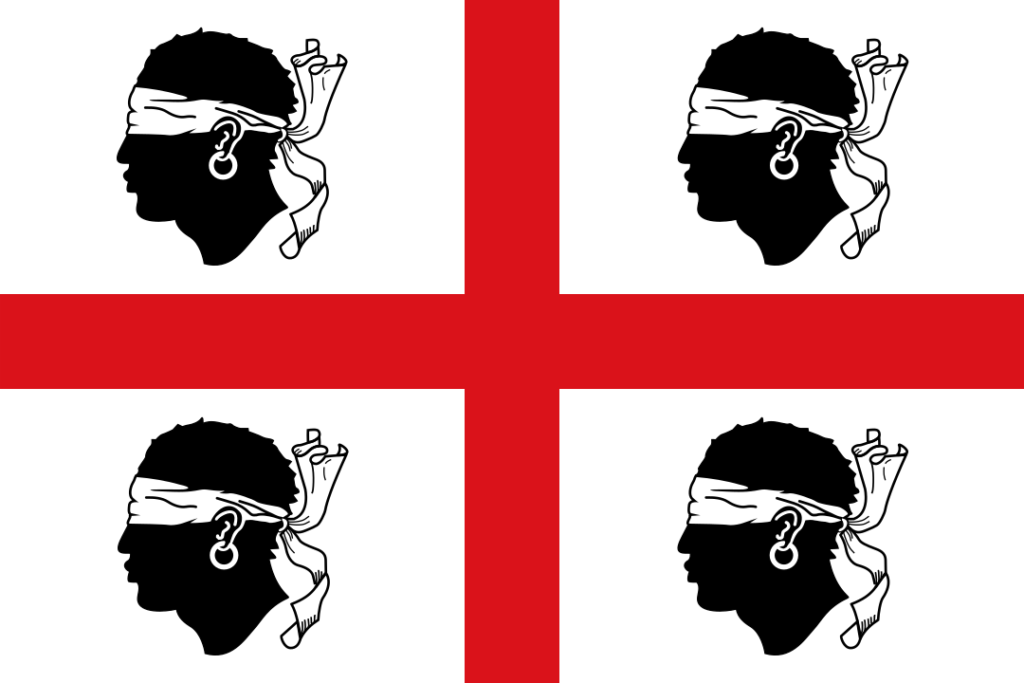

Symbol of Pride and Identity
The flag acts as a unifying emblem for Sardinians, a visual affirmation of their distinct culture and heritage. Its widespread display reflects a deep-seated pride in the island’s unique history, landscapes, and traditions. This sense of identity is particularly poignant in a globalized world, serving as a reminder of the island’s resilience and autonomy through centuries of change.
Cultural Events and Festivals
The flag is a focal point during cultural events and festivals, where it celebrates Sardinia’s rich traditions and vibrant community life. It adorns streets and squares during local festivals, religious processions, and commemorative events, adding color and a sense of shared heritage. These occasions often combine traditional Sardinian music, dance, and attire, with the flag symbolizing a continuity of past and present.
Everyday Life
In everyday life, the flag’s motifs find their way into numerous aspects of Sardinian life. It is creatively incorporated into fashion, accessories, and merchandise, such as beach umbrellas, towels, and even beer labels, most notably on bottles of Birra Ichnusa, a beer that has become synonymous with Sardinian identity. This ubiquitous presence in daily life keeps the spirit and values of the island alive in the hearts of its people.
International Recognition
Beyond its local significance, the flag also serves as a marker of Sardinian identity on the international stage. Sardinians living abroad or traveling often carry the flag as a symbol of their roots, contributing to a global recognition of the island’s culture and history. This has fostered a sense of belonging and community among the Sardinian diaspora, connecting Sardinians around the world back to their island home.
In sum, the Sardinian flag stands as a powerful symbol of identity, pride, and community in modern times. Its use in public celebrations, private moments, and the broader cultural landscape underscores the enduring bond between the island of Sardinia and its people.
FAQ
The presence of Moors on the Sardinian flag symbolizes various historical events and entities. One theory suggests that the four Moors represent the four Moorish princes defeated in battle, while another theory links them to the victories of Aragon against Zaragoza, Valencia, Murcia, and the Balearics. A third theory proposes that the four heads represent the four medieval Judicates of Sardinia.
The flag’s history dates back to the 13th century, with the oldest certified heraldic symbol featuring the cross of Saint George with four Moors in each quarter. Over time, the depiction of the Moors on the flag evolved, with variations in their appearance and orientation. The flag’s design has undergone changes, including blindfolds and bandages on the Moors’ foreheads, reflecting different historical periods and rulers. Ultimately, the Four Moors have become a significant symbol of Sardinia’s history and identity.
Sardinia and Corsica have similar flags featuring the Moor’s head due to historical connections and shared heritage.
- The design of the Moor’s head on both flags originates from the Kingdom of Aragon and was used in Sardinia after the Aragonese conquest in 1297.
- In Corsica, the symbol is known as ‘La Testa di Moru’ and has roots dating back to the 11th century.
- The flag of Sardinia, known as the Four Moors flag, displays four Moorish heads separated by a cross of St. George.
Over time, variations in the orientation and appearance of the Moors on the flag occurred, reflecting different historical periods and rulers. The design with blindfolded Moors facing left first appeared in 1800 after Sardinia passed to the House of Savoy, possibly as a protest against mainland rulers. Both islands’ flags share this unique design as a symbol of their history, identity, and shared Mediterranean heritage.


